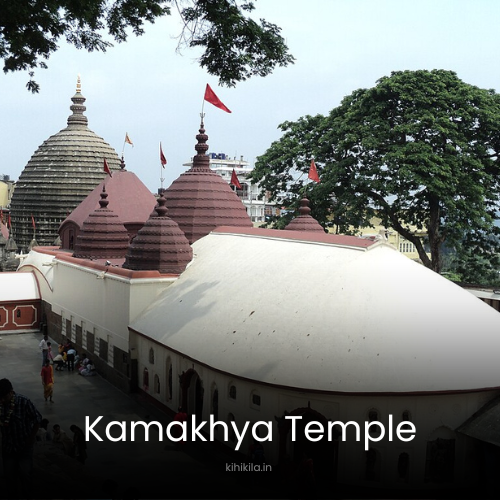Introduction
Kamakhya Temple is one of the most revered Hindu temples in India, dedicated to Goddess Kamakhya, an incarnation of Shakti. Located atop the Nilachal Hill in Assam, this temple is a significant spiritual and cultural landmark, drawing devotees and historians alike. The temple’s unique traditions, mythology, and architectural significance make it stand apart from other religious sites.
The Mythology Behind Kamakhya Temple
According to Hindu mythology, Kamakhya is one of the 51 Shakti Peethas, where the yoni (genital organ) of Goddess Sati fell after Lord Shiva performed the cosmic dance of destruction. This event led to the establishment of this sacred temple, symbolizing the power of femininity and fertility. Unlike other temples, Kamakhya Temple does not house an idol; instead, a naturally occurring stone structure, considered the representation of the Goddess’s yoni, is worshipped.
Architectural Marvel and Historical Significance
The temple dates back to the first millennium, as evidenced by references in the Allahabad rock inscriptions of Emperor Samudragupta. The original structure was destroyed during the medieval period and later rebuilt in 1565 by Chilarai of the Koch dynasty.
Kamakhya Temple showcases a distinct blend of architectural styles, primarily featuring the Nilachal dome-style structure, influenced by medieval temple designs. The main sanctum is a cave with a perennial underground spring that keeps the yoni-shaped rock naturally moist. Surrounding the temple are smaller shrines dedicated to different forms of the Goddess, including Bhairavi, Tara, Bhuvaneshwari, and Ghantakarna.
The Ambubachi Mela: A Unique Festival of Goddess Worship
One of the most intriguing aspects of Kamakhya Temple is the annual Ambubachi Mela, a four-day festival that signifies the Goddess undergoing her menstrual cycle. The temple remains closed for three days during this period, and on the fourth day, grand celebrations take place as the doors reopen. Devotees believe that during this time, the Earth’s fertility is at its peak, making it an auspicious occasion for seeking blessings.
Unlike other Hindu festivals, Ambubachi Mela does not involve idol worship but rather emphasizes the natural forces governing life. Pilgrims from across India visit the temple, making it one of the largest religious gatherings in the country.
Other Significant Celebrations
Apart from Ambubachi, the temple is also a prominent site for Durga Puja, celebrated with grandeur during the Navaratri festival in September-October. Devotees participate in rituals, prayers, and offerings, making it a spiritually enriching experience.
The Power of Tantric Traditions
Kamakhya Temple is deeply associated with Tantra worship. The temple serves as a hub for Tantric practitioners who seek spiritual enlightenment and knowledge. The rituals performed here are different from those in conventional Hindu temples, incorporating ancient Vedic and Tantric practices. This temple is considered a vital center for anyone interested in understanding the depths of Hindu spiritual traditions beyond mainstream rituals.
The Spiritual and Cultural Importance
The temple is not just a religious site but also an important cultural heritage of Assam. Its existence highlights the strong presence of Shakti worship in the region, influencing local traditions, festivals, and rituals. The spiritual energy of the temple is believed to grant wishes, especially those related to fertility, marriage, and prosperity.
Why Kamakhya Temple Stands Out
Unlike many pilgrimage sites in India, Kamakhya Temple does not follow conventional idol-based worship. The natural rock formation and underground spring add a mystical charm, making it one of the most unique Shakti Peethas. The temple’s integration of Tantra, Shakti worship, and ancient traditions sets it apart, attracting scholars, spiritual seekers, and devotees from all over the world.
Conclusion
Kamakhya Temple is a sacred and historical landmark that holds immense religious significance. It is a site where mythology, spirituality, and culture intertwine, making it a place of deep devotion and exploration. Whether one visits for religious reasons or to understand its cultural heritage, this temple remains an essential part of India’s spiritual landscape.












